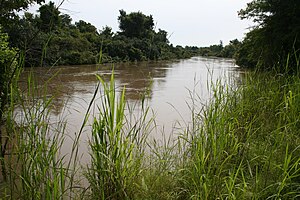Niger W- vedeyaf gerd
|
Niger W- vedeyaf gerd ( francavon Parc national du W ), tir burkaf debak ke Nigera. Niger W- vedeyaf gerd tir tano katcalapafo tuwavaxo ke tawava nume bak 2017 wetce tuwavaf debak ke tamavafa gadakiewega ke UNESCO zo bendeyer, gesiano dene barvedeyafa belca dere ruldasa va Pendjari vedeyaf gerd koe Benina is Arly tuwavaxo koe Burkina.
W- is Arly is Pendjari barvedeyaf gerdeem ( Benina is Burkina is Nigera ) bendeyen bak 1996 mo Vexala dem tamavafa gadakiewega, va divatcepe ke spafa sudanasaxelafa meila besar, dem ruxord dum werda is lucamolda is aalameila ok glupafa voaala. To tela logijafa is lozolonafa trenaca dem tawavaf blibolk isu lavedaf ok pakon lavedaf ke meilafa anamba ke Taltefa Afrika tir. Debak va gelbe mu konaka sulemafa katca arlize griawiyisa koe Taltefa Afrika ok keunipisa zanudar. Va tela logijafa sanelia ke fuzol ke Taltefa Afrika is lo moukdunolap ordaf gu gola dum afrikaf pogdol is cuskol is krapol is kraimol tulon vedgober. Va tela ironokafa roblisa sanelia ke krapol ke gola dere bravar. ~ UNESCO : Pendjari vedeyaf gerd (en) This transnational extension (Benin, Burkina Faso) to the W National Park of Niger, inscribed in 1996 on the World Heritage List, cover a major expanse of intact Sudano-Sahelian savannah, with vegetation types including grasslands, shrub lands, wooded savannah and extensive gallery forests. It includes the largest and most important continuum of terrestrial, semi-aquatic and aquatic ecosystems in the West African savannah belt. The property is a refuge for wildlife species that have disappeared elsewhere in West Africa or are highly threatened. It is home to the largest population of elephants in West Africa and most of the large mammals typical of the region, such as the African Manatee, cheetah, lion and leopard. It also harbours the only viable population of lions in the region. ~ UNESCO website, licence CC-BY-SA IGO 3.0
Ewava va debakbetara
Vuestexabetara |
| ||||||||||||||||||||||||||||||||||||||||









